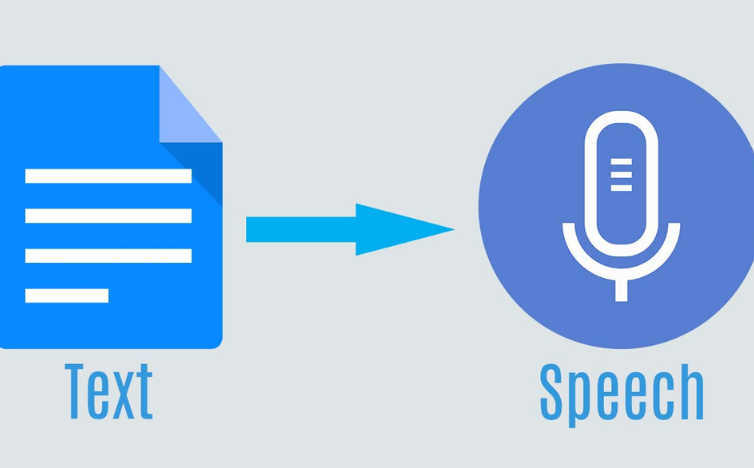In a world that’s increasingly digital-first, the power of voice in content cannot be overstated. Voice-based content, particularly that generated by AI, isn’t just for the tech-elite or the digitally-savvy. It’s a powerful tool accessible to content creators, marketers, and educators looking to add an extra layer of engagement and accessibility to their work.With the rapid advancements in AI technology, the world of text-to-speech (TTS) tools is expanding quickly. This leaves many in the digital space pondering one key question: How do you select the right TTS AI tool for your specific needs?
This comprehensive guide is designed to demystify the TTS software selection process for you. By distinguishing the features such AI tools offer, you can confidently select a product that aligns with your content generation objectives.
Table of Contents
Understanding Text-to-Speech AI
Before we jump into the nitty-gritty of selection, it’s crucial to understand the capabilities of TTS AI. Text-to-speech is a process that converts written text into spoken words. Traditionally, TTS systems are based on concatenative or unit-selection synthesis, which involves breaking down the text into smaller parts for the machine to convert to audio. The more advanced current models, such as those based on deep learning, generate human-like speech responses.

Text-to-speech AI tools showcase a wide array of features, from voice style options and accent variety to integration capabilities with various platforms. However, with this wide array of options, the tool selection can seem daunting. Fear not, as we explore some of the decisive factors to consider below.
See Also: 10 Best AI Tools For Voice Changer
Decisive Factors in Selecting a Text-to-Speech AI Tool
Voice Quality
Voice is the primary currency of TTS. The quality of the voice your TTS AI produces can significantly impact how well the message is received. When evaluating tools, listen to the sample voices provided and consider which sound the most human-like and are the most comfortable to listen to for extended periods. It’s not just about ensuring the voice is clear and natural-sounding; it should also portray the intended emotion and tone accurately.
Language Support
Your audience might be global, so it’s important to ensure your TTS tool supports various languages. Language support isn’t just about the number of languages a tool offers, but also the quality of the speech in those languages. Look for TTS tools that offer clear enunciations and proper accents in the languages you require.
Pronunciation Customization
One size doesn’t fit all, especially when it comes to proper nouns or industry-specific jargons. An AI tool that allows you to customize the pronunciation of certain words or phrases can be invaluable, ensuring that your TTS output aligns with the correct vernacular.
Intonation and Speed Options
The ability to control the intonation of speech is a sophisticated feature that can greatly enhance the contextual delivery of your content. Look for tools that offer these intonation controls and also allow you to adjust the speaking speed to best suit your audience and the topic at hand.
See Also: 11 Best AI Tools For Music Generators
Integration and Compatibility
TTS tools can level up your podcast, video, or blog content, but only if they are seamlessly integrated with your chosen platform. Ensure that the tool you select is compatible with your content management system, video editing software, or e-learning platform.
The Best Text-to-Speech AI Tools for Different Use Cases
Analyzing the prolific realm of TTS AI leads us to conclude that different tools excel in various areas. Whether you are a content creator, a marketer, or an educator, there’s a TTS AI tool out there tailored to augment your specific needs.

For E-Learning Content
E-learning platforms often require natural-sounding voices, clear enunciations, and the ability to pronounce educator-created terms accurately. Look for TTS AI tools that offer these, alongside the flexibility to integrate with your chosen e-learning software.
For Content Creation and Marketing
In the realm of marketing and content creation, emotional and expressive voices can captivate audiences. TTS AI tools like SpeechKit and iSpeech can provide voices that go beyond the monotone, offering brands and marketers the opportunity to create audio assets that resonate with their audience.
For Video Content
Video content is highly visual, but the inclusion of TTS voices in video can enhance accessibility and the narrative flow. Tools like WaveNet by Google Cloud and Amazon Polly offer TTS voices that are particularly well-suited for video content, ensuring a consistent audio-visual experience.
See Also: 8 Best AI Tools for Transcription Services
Conclusion: Finding the Best AI Tool for Your Needs
When it comes to choosing the right AI tool for text-to-speech, it’s essential to consider your specific needs and requirements. Take the time to evaluate the benefits, types, factors, and top features of each tool before making a decision. By doing so, you can find the best AI tool that suits your needs and helps you achieve your goals efficiently.
Remember that technology is constantly evolving, so staying informed about the latest advancements in AI tools for text-to-speech is crucial. Keep exploring new options and updates in this field to ensure that you are always using the most innovative solutions available.
In conclusion: Finding the best AI tool for your needs requires careful consideration and research. By following the guidelines outlined in this article and staying proactive in your search for the right tool, you can take full advantage of all that text-to-speech technology has to offer.
FAQS
Can text-to-speech technology be used for long-form content?
Yes, text-to-speech technology can be used for anything from tiny tweets to epic novels. It is a versatile tool for any form of content that is primarily text-based, enabling people to consume your content on-the-go.
Will TTS replace human voiceovers in videos and other content?
While TTS technology is sophisticated, it’s unlikely to fully replace human voiceovers due to the nuances and emotional range that human voices can convey. Instead, TTS should be viewed as a complementary tool that can enhance accessibility and create new content opportunities.
Is TTS technology costly?
The cost of TTS AI tools varies greatly, ranging from free models with limited options to premium services with extensive feature sets. Consider your budget carefully, but also remember to focus on the value the tool brings to your work.
Are TTS voices customizable?
Some TTS AI platforms include the ability to adjust aspects of the voice, such as pitch and speed, but this may not extend to the actual voice itself. More advanced tools might offer the option to train a specific voice model if you require truly unique speech patterns.
What should I look for in terms of customer support for a TTS AI tool?
Good customer support is essential, especially when integrating new tools into existing workflows. Look for TTS providers with robust support features, such as online knowledge bases, developer forums, and clear pathways to reaching a support representative.




